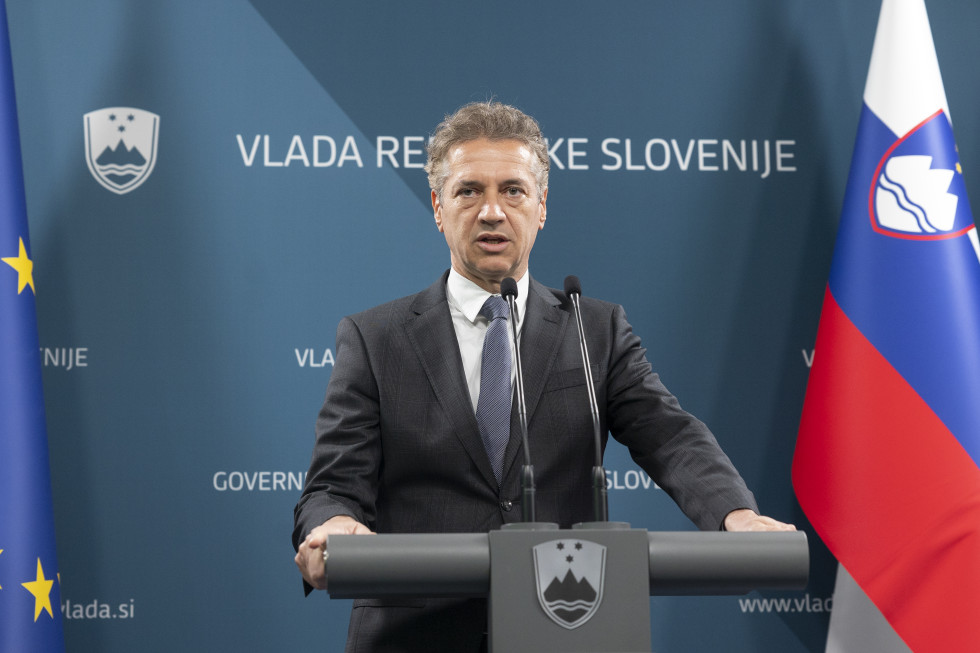102nd regular session of the Government of the Republic of Slovenia

Prime Minister Robert Golob | Author STA/Bor Slana
The Government of the Republic of Slovenia adopted a decision proposing the recognition of Palestine as an independent and sovereign state based on the borders from 1967 or any other borders agreed between Israel and Palestine, subject to further progress towards reaching a deal on peace in Gaza and the release of hostages, and the continued reform efforts and empowerment of Palestinian authorities with the aim of adopting a two-state solution. Promptly or by 13 June 2024 at the latest, the Government of the Republic of Slovenia will assess the performance of the expected actions specified in the relevant decision and, in the event of progress, submit its proposal for the recognition of Palestine as an independent and sovereign state to the National Assembly.
The Government approved a new draft Ordinance on State Assets Management Strategy, the main basis for active management of state assets. The new strategy, which will be discussed and approved by the National Assembly, will replace the first strategy adopted in 2015. It is adapted to the current context and identifies raising the productivity of companies as a key economic objective. The management strategy is a basic tool for active ownership by the state, which communicates its objectives for the management of state-owned companies to the investment manager, i.e. Slovenian Sovereign Holding (SSH), shareholders, the broader capital market and the general public. The strategy involves a total of 84 state-owned assets, which will continue to be divided into strategic, important and portfolio assets. There are 34 strategic assets (40%), where SSH has to take into account not only economic and financial objectives, but also the strategic objectives set out in the strategy, eight important assets (10%), where the State seeks to preserve the country's key development factors, while the remaining 42 assets (50%), where the State seeks to achieve purely economic objectives, are portfolio assets. The share of strategic assets (minimum state share of 50% and one vote) in the new draft strategy is higher than in the 2015 strategy, while the share of important assets (minimum state share of 25% and one vote) and portfolio assets, which can be freely disposed of by SSH, is lower than in the existing strategy. The general objectives of asset management relate to human rights, social responsibility, gender equality, risk management, increasing productivity and strengthening the corporate governance system of state-owned companies, while the country's development orientations are based on the United Nations 2030 Agenda for Sustainable Development and the Slovenian Development Strategy 2030. Strategic assets, as mentioned above, also set out the strategic objectives that the country wants to achieve with each strategic asset. The key economic objective of the strategy is to raise productivity, i.e. to get companies to do more with the resources at their disposal. One productivity indicator is value added per employee. The target return on equity regarding the portfolio as a whole remains at 8%, taking into account the type and specific features of individual assets.
The Government initiated the procedure for drafting the 2025 and 2026 budgets. At the so-called first budget meeting, it set the timetable for the preparation and adopted the indicative breakdown of budget expenditure by area and took note of the draft budget memorandum. Taking into account the limit on total expenditure set in the recently adopted fiscal framework for the period 2025–2027, budget expenditure in both years could amount to around EUR 17.1 billion. Although expenditure may increase next year compared to the 2025 budget adopted last year, the two draft budgets will follow the medium-term objective of public debt sustainability and keeping the general government deficit below 3% of gross domestic product.
It also adopted the framework to erect a monument commemorating Slovenia’s independence in Ljubljana. Following a unanimous vote, the commission for drafting a framework to erect a monument commemorating Slovenia’s independence in Ljubljana adopted a decision proposing Trg Republike as the location of the monument, taking into consideration all cultural heritage protection criteria. Erecting the monument in Trg Republike is of unique historical significance, as it was here that the key manifestation or official declaration of independence took place. On 26 June 1991, an independent Republic of Slovenia was officially and solemnly proclaimed in this square. The entire state leadership gathered at the main state ceremony, along with foreign representatives and a crowd of people. The new Slovenian flag was unfurled for the very first time. The act of raising the flag also highlights the deeply symbolic and emotional element of our independence and statehood. Trg Republike looks onto the parliament building and is therefore a symbolic representation of the relationship between the people and the state. Based on the expert opinion of the Institute for the Protection of Cultural Heritage of Slovenia, the proposed microlocation of the independence monument is the spot where the flagpole currently stands and where there used to be a linden tree before it was replanted elsewhere.

